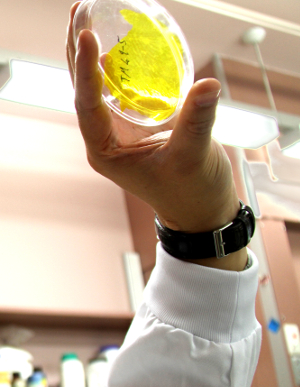Anti-aging plastic provides huge energy savings
 Australian researchers have created a new material which prevents plastic from aging, and should be a huge boost to the energy industry.
Australian researchers have created a new material which prevents plastic from aging, and should be a huge boost to the energy industry.
A team at CSIRO has developed the ‘botox for plastic’ based on the incredible abilities of Metallic Organic Frameworks, which have some of the largest possible surface areas for their size.
The new technique will allow industries to separate out their raw materials such as gases, liquids and solids around fifty times faster than before.
The savings should be vast, as estimates suggest around 40 per cent of the world’s energy use is dedicated to such separation processes.
CSIRO engineer Dr Sam Lau says the improvements could be massive.
“At the moment power generators rely on plastic linings made up of tiny holes just one nanometre wide, a tiny fraction of a width of a human hair,” he said.
“For decades scientists have been trying to improve the efficiency of this process by using plastics with larger holes. However, these larger openings tend to age very quickly and collapse within a matter of days.
“What we’ve done is make use of incredible compact materials known as Metallic Organic Frameworks – or MOFs – which have the surface area of a football field in just one gram.
“We found that the density of the MOFs acts like a shot of botox and actually freezes the larger holey structures in place for an entire year.”
This makes a lining with larger holes possible.
“This is a much more environmentally friendly approach and of course translates into huge cost and efficiency savings for the companies who take this up,” Dr Lau said.
Not only does the technique have vast potential for cleaning gases from power plants, it could be used to enhance the purity of natural gas streams, the separation of water from alcohols (for biofuel synthesis) and for dye removal in the textile industry.
“We’re extremely excited by this discovery and hope to see it being applied commercially within one to two years,” Dr Lau said.
The latest research has been published in the scientific journal Angewandte Chemie.







 Print
Print